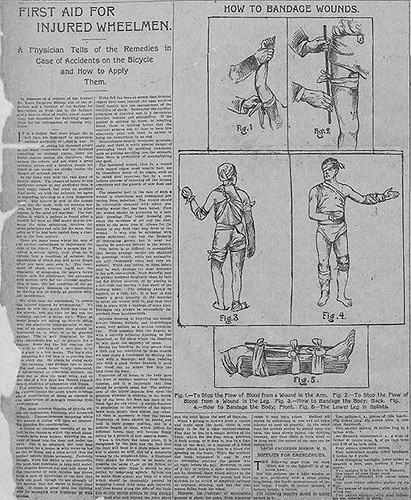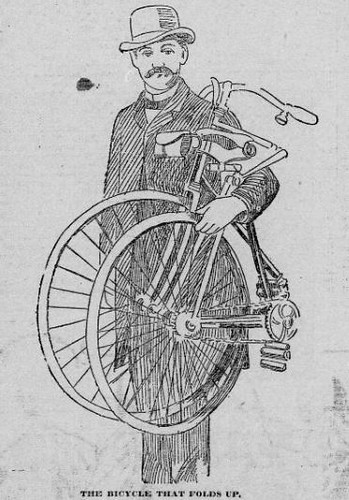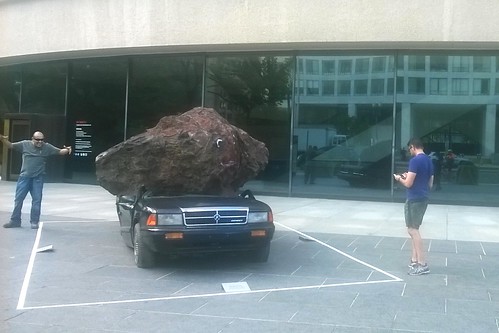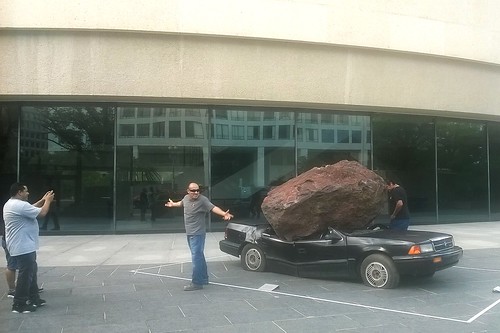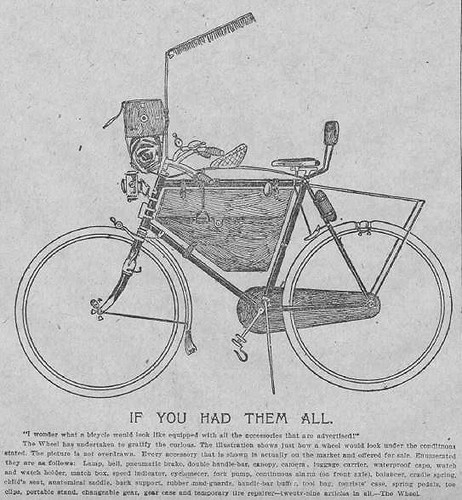
A bike of 1896 shown equipped with all possible accessories
www.loc.gov/resource/sn84031792/1896-05-10/ed-1/?sp=50
Title-The journal, May 10, 1896
Place of Publication-New York [N.Y.]
Library of Congress
"I wonder what a bicycle would look like equipped with all the accessories that are advertised!"
The Wheel has undertaken to gratify the curious. The illustration shows just how a wheel would look under the conditions stated. The picture is not overdrawn. Every accessory that is shown is actually on the market and offered for sale. Enumerated they are as follows: Lamp, bell, pneumatic brake, double handle-bar, canopy, camera, luggage carrier, waterproof cape, watch and watch holder, match box, speed Indicator, cyclometer, fork pump, continuous alarm (on front axle), balancer, cradle spring, child's seat, anatomical saddle, back support, rubber, mud-guards, handle-bar buffer, tool bag, tourists' case, spring pedals, toe clips, portable stand, changeable gear, gear case and temporary tire repairer. Twenty-nine articles in all. The Wheel
Today the possible accessory choices boggle the mind. I happened up the site of a newish bike company that offers as options:
Safety Features
Front/rear lights
Turn Signals
Intuitive brake light
Laser emitted “bike lane”
Front and rear camera
Collision detection
Tech Features
Built-in WiFi Hotspot
USB ports to power devices
Bluetooth Connectivity
GPS and Anti-theft Protection
Centralized Battery System
Power Generation Systems
App supported
Low Maintenance
Make our bikes “hassle-free”
Belt drive
Less wear than a chain
No oil needed
Internally geared hub
Ease of shifting
No derailleur
No “cross chain” issues
All cables and power sources built into the frame
Good Lord. I don't think that more complex systems than cars are equipped with (such as laser generated "bike lanes" you provide for yourself) make much sense but I could be wrong about that but I'm absolutely sure front and rear cameras are not safety equipment, they are a tool for assuring better results if you end up in court, and maybe as a way to record some travels for amusement's sake.
I guess Tech Features is to be understood as "distractions for when you are stopped" (or at least most of it). I particularly like "power general systems" in the plural. Whatever.
The low maintenance aspects - well, I guess that there is something to some of that, but there are always tradeoffs - and TANSTAAFL.

